Sound: 









Value: 









(Read about our ratings)
Measurements can be found by clicking this link.
 The Empyreans represent the gutsiest move the headphone biz has seen in a long time. At $2999 USD, they’re almost ten times the price of Meze Audio’s next-priciest over-ear headphones, the 99 Classics ($309). They use a new driver technology I’ve never seen before. And they’re designed and manufactured in the medieval country town of Baia Mare, Romania, which isn’t exactly a tech nexus.
The Empyreans represent the gutsiest move the headphone biz has seen in a long time. At $2999 USD, they’re almost ten times the price of Meze Audio’s next-priciest over-ear headphones, the 99 Classics ($309). They use a new driver technology I’ve never seen before. And they’re designed and manufactured in the medieval country town of Baia Mare, Romania, which isn’t exactly a tech nexus.
A quick glance at the Empyreans tells you they at least look like $3000 headphones, which is no easy feat. Each earpiece’s intricate frame is machined from a single piece of aluminum, while the headband combines springy carbon fiber with tooled leather, and the leather-covered earpads are as soft as an overfed bichon.
But it’s obvious that most of the Empyreans’ cost didn’t go into the cosmetics -- it went into the unique Isoplanar driver, which was created by Ukrainian research firm Rinaro Isodynamics. It’s a planar-magnetic driver, with a voice coil applied to a membrane that’s suspended between arrays of magnets. What makes this one different from the planar-magnetic drivers found in headphones by Audeze, Fostex, HiFiMan, and others is that it has two sections. The lower section of the voice coil, which is positioned to align with the listener’s ear canal, is spiral-shaped, while the upper section follows a “switchback” pattern, sort of like a mountain pass. Meze says that the spiral section is more efficient at reproducing high frequencies, while the switchback section is more efficient at reproducing low frequencies. A special neodymium magnet array, configured to match the pattern of the voice coil, flanks each side of the driver diaphragm. The driver is said to deliver 100dB sensitivity at 1mW, and to have frequency response all the way out to 110kHz.
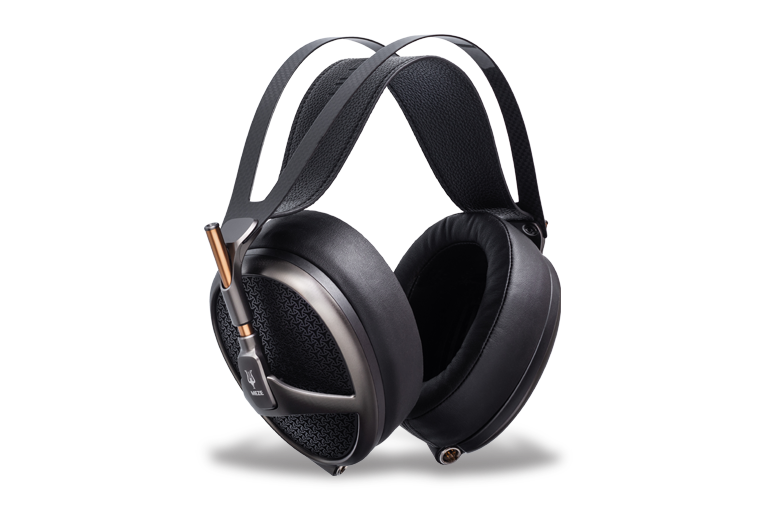
I’m always skeptical of exotic driver designs and arrays in headphones, because most tuning of passive headphones is purely acoustical and electromagnetic, involving adjustments to the physical design of the components rather than the much simpler and more precise tweaking of a speaker crossover. Such crude methods can limit the designer’s ability to compensate for anomalies in a driver’s response. But my brief auditions of the Empyreans at a couple of tradeshows suggested that they were on the right track, so with my trepidation somewhat under control, I decided that the SoundStage! Solo listening panel ought to give them a longer listen.
In the box
Meze wisely didn’t try to guess which cables you’d need for your Empyreans. Instead, they give you your choice of three oxygen-free copper cables: a 9.8' (3m) cable with a 1/4" (6.3mm) plug, a 3.9' (1.2m) cable with a 1/8" (3.5mm) plug, and a 9.8' cable with a four-pin XLR connector for use with balanced-output amplifiers. All connect to the headphones using four-pin, locking mini-XLR plugs. Cables with 2.5mm and 4.4mm plugs and different copper variants are also available, at prices ranging from $249 to $499.
So far, I’ve mentioned only the Empyreans’ leather earpads, but they also include a set of velour earpads, which change the sound in ways we’ll discuss below. The pads are easy to interchange because they’re attached using the force of the driver’s magnets. Just pluck one pad off and replace it with the other.
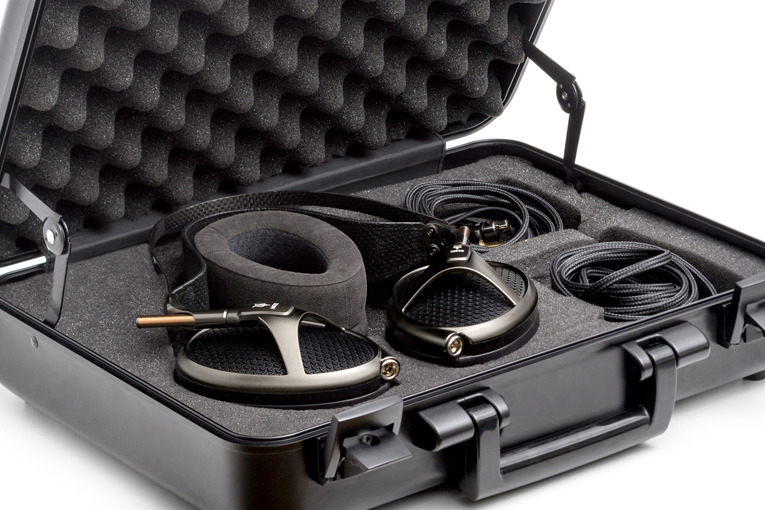
The Empyreans include a briefcase-style metal carrying case that looks like it should hold a pistol or the launch codes for a nuclear arsenal. It’s too bulky for, say, airline travel, but it’s great if you want to throw your Empyreans in the car for a road trip, or if you’re a record producer who wants to impress your clients.
Use
With the unusual “winged” headband providing consistent, just-right pressure all around the ear; the swiveling earpieces; and the large, soft ovoid-shaped leather earpads, we found nothing to complain about with the Empyreans when it comes to comfort. The adjustment for the height of the headphones -- a sliding rod on each side -- is a little stiff and hard to adjust. But once adjusted, it doesn’t drift.
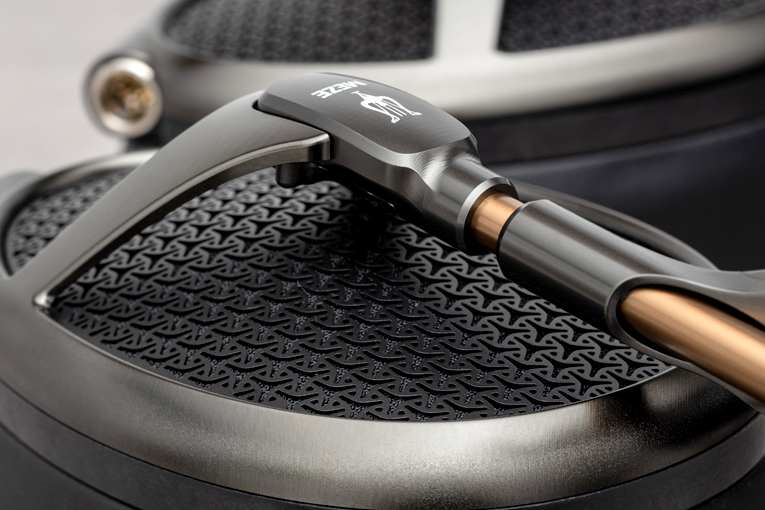
True to Meze’s spec, you can drive the Empyreans to fairly loud levels even with relatively feeble sources such as Android smartphones, although the sound was a little thin when I used them with my Samsung Galaxy S9. Of course, they’re the furthest thing from portable, but the open-back design makes it rather silly to use them outside a fairly quiet home environment because most of the sound around you will leak into the headphones. And besides, they sound better when powered by a separate amp or DAC-amp.
Sound
I liked the Empyreans immediately, because I could hear right away that they had no overt sonic colorations. To me, and to our panelists, they sounded essentially neutral, yet very detailed; often, headphones that sound exceptionally detailed do so because their treble or upper midrange is boosted so the headphones sound brighter, but that’s not the case with the Empyreans. They do seem to have a little more energy above 10kHz than I’m used to hearing, but that creates a sense of “air,” rather than brightness. In fact, I’d say that the Empyreans have a more natural fullness -- the opposite of brightness -- than most audiophile headphones.
As you can read below, my panelists didn’t like the effect the velour pads had on the sound -- they complained that the velour pads softened the sound and took some of the life out of the Empyreans. My reaction was more favorable. I thought the difference between the two pads was fairly mild, with the velour pads sounding a little softer overall, with a little less energy above 10kHz. If I had to choose one, I’d take the leather, but both have a nice sound profile.
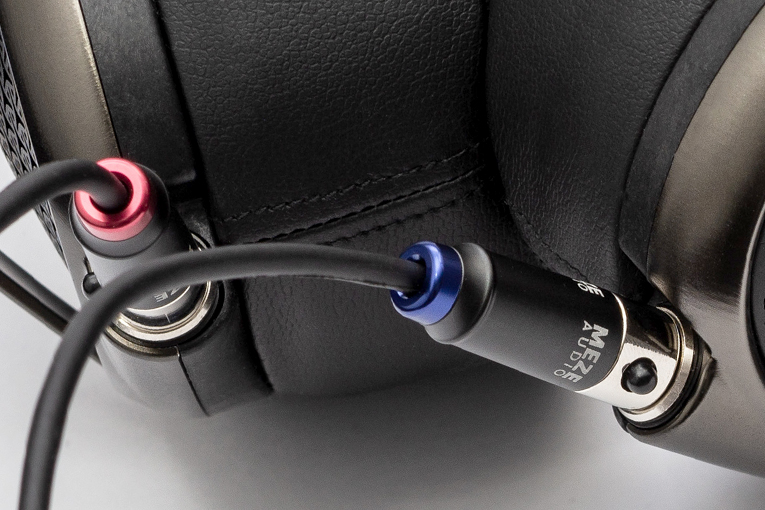
I was particularly struck by the Empyreans’ reproduction of “Look to the Sky,” from guitarist Emily Remler’s debut album Firefly (16-bit/44.1kHz WAV, Concord Jazz). Guitar is typically the most artificial- and lifeless-sounding instrument in a jazz combo, because the amp’s treble control is usually set near minimum, the amp’s internal reverb is often used rather than a more sophisticated external reverb processor or plug-in, and the amplifier is usually close-miked with an inexpensive dynamic microphone. Thus, there’s no natural ambience at all. The Empyreans made this difference even starker than it usually is, delivering a spacious, relaxed presentation of the acoustic piano, double bass, and drums, making the guitar sound even more monophonic and colorless in contrast. Not that I’m complaining -- Firefly is one of my all-time-favorite jazz guitar albums, and this contrast is what a jazz combo with electric guitar sounds like in real life. Most audio systems obscure this difference to some extent. I especially loved the way all the instruments were just there with Remler, rather than jumping out of the mix due to artificial coloration -- again, like the sound of a jazz combo in a typical performance space.
Weirdly, the Empyreans also did an amazing job of bringing out the contrasts in “Shoot to Thrill,” from AC/DC’s Back in Black (320kbps Ogg Vorbis, Atlantic/Spotify) -- contrasts I didn’t even realize were there. The instruments in this straightforward mix are largely intended to blend together into a seamless whole, but through the Empyreans they all stood out almost as if I were sitting right in the middle of the band’s rehearsal room. The distinction between the slightly cleaner and more complex sound of Malcolm Young’s Gretsch guitar on the left versus brother Angus’s Gibson on the right was easy to hear through the Empyreans, yet obscured even by Focal’s Stellias, which are some of the best headphones I’ve ever heard. AC/DC is like a chain restaurant -- the band’s virtue lies in the fact that everything’s always the same and there are no surprises. But the Empyreans showed that Back in Black represents a careful layering of sounds rather than the undifferentiated, stampeding sonic mass I thought it was.
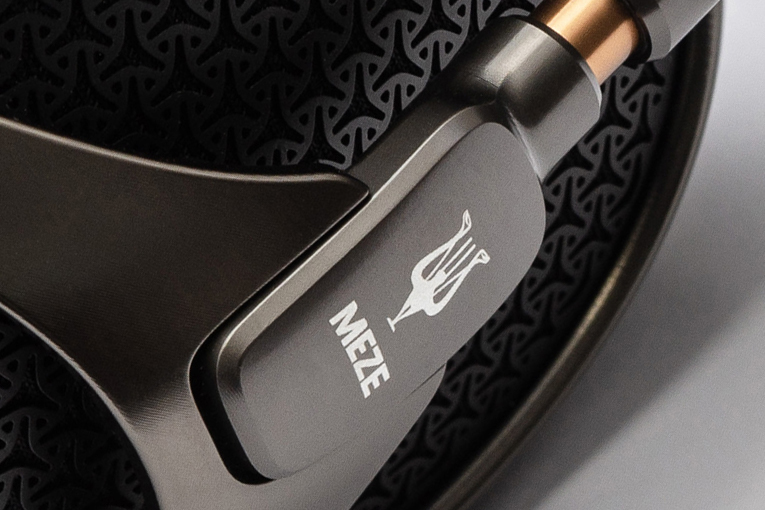
“Shoot to Thrill” also made it clear that the difference between the Stellias and the Empyreans is almost entirely in the midrange, of which the Stellias seemed to have a few dB more between 1 and 2kHz (measurements confirmed this). Thus, the Stellias sounded more vivid and lively, and not as relaxed; it almost felt like the tempo of the tune increased by one or two beats per minute when I switched to the Stellias, even though that of course wasn’t the case.
Singer/saxophonist Camille Thurman’s take on “September in the Rain,” from Waiting on the Sunrise (24/96 AIFF, Chesky), gave me a chance to listen deeper into the Empyreans’ sound. Because there were none of the major colorations that would normally steal my attention, I could focus more on the subtleties. Overall, I thoroughly enjoyed the sound, which gave me the “you are there” feeling that is the goal of Chesky’s Binaural+ recording technique. I loved that I could hear an accurate spatial representation of the different instruments, with Thurman and bassist Cecil McBee obviously standing near the dummy head used to record the album; guitarist Jack Wilkins about 12' off to the left; Thurman stepping back perhaps 8' when she takes her tenor sax solo; and drummer Steve Williams way back, perhaps 18' to 20' behind the microphones. I did hear a little bit of coloration in her voice -- a slight congestion in the upper mids that wasn’t there with the Stellias -- but I couldn’t find anything else about the sound on which I could muster a comment.
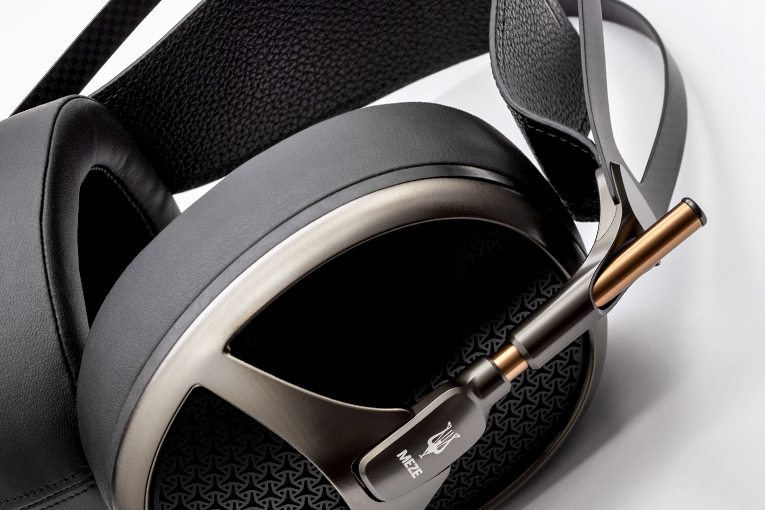
The difference between the two headphones was even more apparent, surprisingly, on Larry Grenadier’s extraordinary all-double-bass album The Gleaners (16/44.1 WAV, ECM). The track “Woebegone” sounds almost like a blues-metal tune adapted for pizzicato (plucked) double bass, with three overdubbed basses working together to hold down a repeated chord figure. With the Stellias, I felt the power and dynamics of each bass more, almost as if my ears were a foot from the f-holes -- a bigger sound, I think, than would be possible in real life with such a quiet instrument. The Empyreans sounded less punchy, but arguably more natural, with a more realistic presentation of space. What’s correct? No one can know unless they were in the studio that day.
One thing I can state with certainty is that the Empyreans were more forgiving of bad recordings. “The Closer I Get to You,” a duet between Luther Vandross and Beyoncé, from Vandross’s Dance with My Father (320kbps Ogg Vorbis, J Records / Spotify), is an unfortunate example of a way-overprocessed recording of a grating arrangement of a great tune performed by great singers. Through the Empyreans, the sound was still detailed, yet smoother and more relaxed-sounding, at the expense of a somewhat softer electric bass sound. The Stellias, in comparison, got the bass tighter (and, probably, righter), but also highlighted the phoniness of the production and, in particular, made Beyoncé’s voice sound somewhat blaring. I don’t know which sound is “right,” but I do know which one I enjoyed more.
Comparison
To get a broader perspective on the sound of the Empyreans, I ran them by our usual panelists: LeRena Major, a Los Angeles saxophonist who’s held several positions in the music business and is a voting member of the National Academy of Recording Arts & Sciences, and John Higgins, who holds a master’s in music performance from USC and has served as a frequent contributor to Wirecutter and Sound & Vision. Both compared the Empyreans with the Audeze LCD-X, the Focal Stellia, and the HiFiMan HE1000 V2 headphones. Both also greatly preferred the Empyreans’ sound with the leather earpads, and their comments below reference the sound with the leather earpads only.
LeRena liked the tonal balance of the Empyreans, proclaiming their treble detail and openness better than that of the LCD-Xes, and their balance of treble to bass more realistic than that of the HE1000 V2s. She thought the Empyreans and the Stellias sounded similar overall. The big difference she heard was that the Empyreans had a somewhat bigger and more natural-sounding sense of space. That’s exactly what you’d expect when comparing an open-back model to a closed-back model, but LeRena didn’t know at the time whether these models were closed- or open-back, and it’s hard to tell by looking at them. She did, however, like the somewhat tighter and punchier sound of the Stellias’ bass -- no surprise, considering that most of her listening is to pop music.
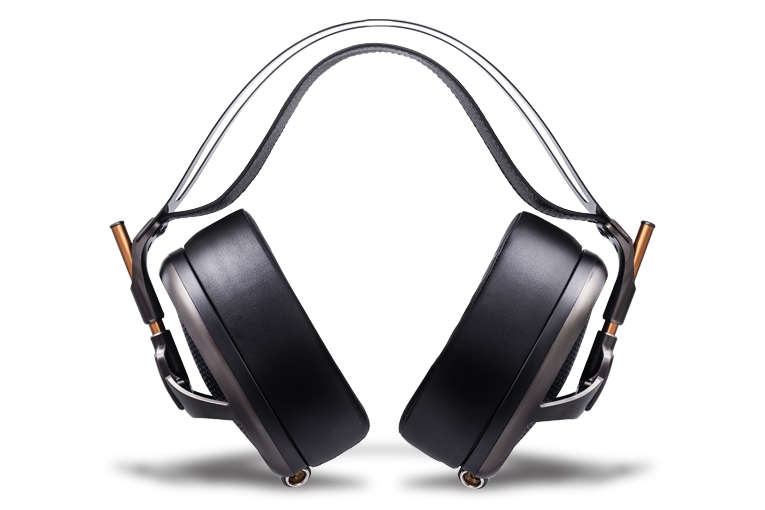
John felt much the same way about the comparison between the Empyreans and the Stellias; he thought both sounded a couple of notches better than the other headphones we tried. He praised both headphones’ midrange and treble detail, and the sense of space they offered, although he felt the Empyreans sounded a little more spacious. He also felt the Empyreans had a somewhat fuller bass sound -- and/or a softer treble, depending on how you look at it -- and occasionally gave him about a decibel more bass than he really wanted.
Conclusion
The Empyreans clearly rank among the very best headphones you can buy. They deliver loads of detail and a wonderful sense of space, all without skewing the tonal balance toward the treble as so many audiophile headphones do, and they have no quirks or anomalies that would make me warn certain listeners away from them. No matter what kind of music you love, you’ll love hearing it through the Empyreans.
. . . Brent Butterworth
Associated Equipment
- DAC -- Musical Fidelity V90-DAC
- Headphone amp -- Audio-gd NFB1-AMP
- Headphone amp-DAC -- iFi xDSD, Monoprice Monolith THX 124459
- Smartphone -- Samsung Galaxy S9
Meze Audio Empyrean Headphones
Price: $2999 USD.
Warranty: Two years repair or replacement.
Meze Audio
Str. Independentei 12/3
Baia Mare, 430071, Romania
Phone: +40 731-426-316
Website: www.mezeaudio.com




